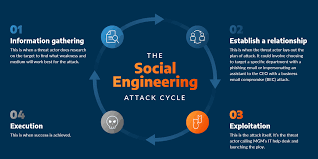Recent DDoS Attacks: News and Impacts
Distributed Denial of Service (DDoS) attacks have been making headlines recently, and their impact on businesses, governments, and individuals is significant. This blog will explore the recent trends in DDoS attacks, how they work, the news surrounding them, and their effects on various sectors.
Understanding DDoS Attacks
A Distributed Denial of Service (DDoS) attack is a malicious attempt to disrupt the normal functioning of a targeted server, service, or network by overwhelming it with a flood of internet traffic. Imagine a restaurant with only a few tables, and suddenly, a crowd of people rushes in all at once. The restaurant can’t handle all the customers, and regular diners can’t get in. Similarly, a DDoS attack floods a network with excessive requests, causing legitimate users to be unable to access the services.
DDoS attacks often involve multiple computers or devices, which are controlled by hackers, known as a botnet. These devices, compromised through malware, collectively bombard the target with traffic. The goal is to exhaust the target’s resources, such as bandwidth, server processing power, or memory, leading to service outages or slowdowns.
Recent News on DDoS Attacks
In recent months, several high-profile DDoS attacks have been reported across the globe. These attacks have targeted a range of organizations, from major tech companies to government agencies. For instance, in August 2024, a large-scale DDoS attack targeted several financial institutions in the U.S., causing temporary disruptions to online banking services.
Similarly, in July 2024, a prominent European government agency fell victim to a DDoS attack that took down its website and online services for several hours. The attack was reportedly orchestrated by a group of hackers aiming to disrupt the government’s digital operations. The scale and impact of these attacks have underscored the growing threat of DDoS as a tool for digital disruption.
How DDoS Attacks Affect Businesses

DDoS attacks can have severe consequences for businesses. When a company’s website or online services are down, it can lead to financial losses, as customers cannot access services or make purchases. For e-commerce businesses, this can mean losing significant revenue, especially if the attack occurs during peak shopping times.
Moreover, businesses often face additional costs associated with mitigating the attack. This includes investing in cybersecurity measures, such as advanced firewalls and intrusion prevention systems, and employing IT staff to address the issues. Recovery from a DDoS attack can also involve reputational damage, as customers may lose trust in the company’s ability to secure its services.
Impact on Government and Public Services
Government agencies and public services are not immune to the effects of DDoS attacks. When a government website or public service portal goes down, it can disrupt essential services, such as tax filings, public health information, and emergency services. For instance, a DDoS attack on a public health department’s website could delay critical health updates or services, potentially impacting public safety.
In addition, DDoS attacks on government agencies can undermine confidence in the government’s ability to protect and manage its digital infrastructure. Such attacks can be politically motivated, aiming to create chaos and erode trust in government institutions.
The Role of Cybersecurity in Mitigating DDoS Attacks
Cybersecurity plays a crucial role in defending against DDoS attacks. Companies and organizations invest in various technologies and strategies to protect their networks and services from being overwhelmed.
One common approach is using DDoS protection services that can detect and filter malicious traffic before it reaches the target. These services often employ sophisticated algorithms and machine learning to differentiate between legitimate and malicious traffic, ensuring that only genuine requests reach the target server.
Another important strategy is implementing network redundancy. By spreading resources across multiple servers and locations, organizations can ensure that if one server is under attack, others can continue to function. This approach helps in maintaining service availability even during an attack.
Future Trends and Predictions
As technology evolves, so do DDoS attacks. Experts predict that DDoS attacks will become more sophisticated and harder to detect. Attackers are likely to use advanced techniques, such as multi-vector attacks, which combine various types of attack methods to increase their effectiveness.
Furthermore, the growth of the Internet of Things (IoT) presents a new challenge. With more devices connected to the internet, there are more potential targets for botnets. This trend could lead to larger and more damaging DDoS attacks in the future.
To counter these threats, organizations will need to continuously update their cybersecurity measures and stay informed about the latest attack methods and defense strategies. Collaboration between businesses, governments, and cybersecurity experts will be essential in developing effective solutions to combat the evolving threat of DDoS attacks.
Conclusion
Recent DDoS attacks highlight the ongoing challenge of securing digital infrastructure against malicious threats. The impact of these attacks is far-reaching, affecting businesses, government agencies, and public services. By understanding how DDoS attacks work, staying updated on recent news, and investing in robust cybersecurity measures, organizations can better protect themselves from the disruptions caused by these digital assaults. As the threat landscape continues to evolve, proactive measures and collaboration will be key to safeguarding our digital world.



